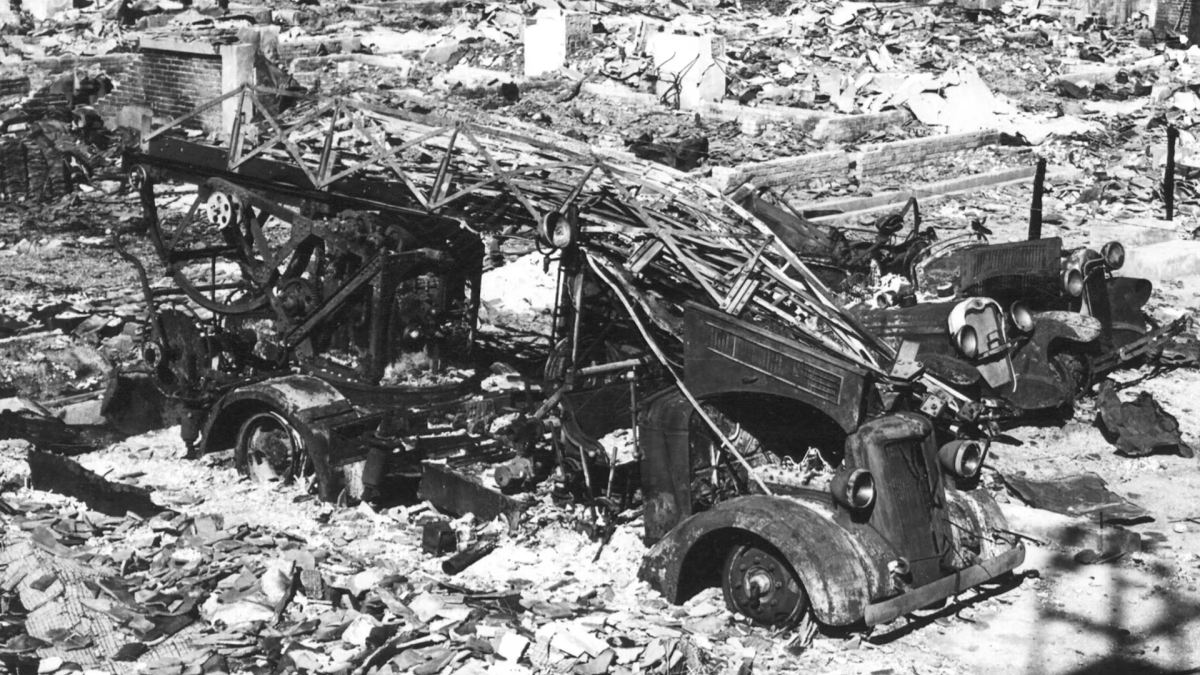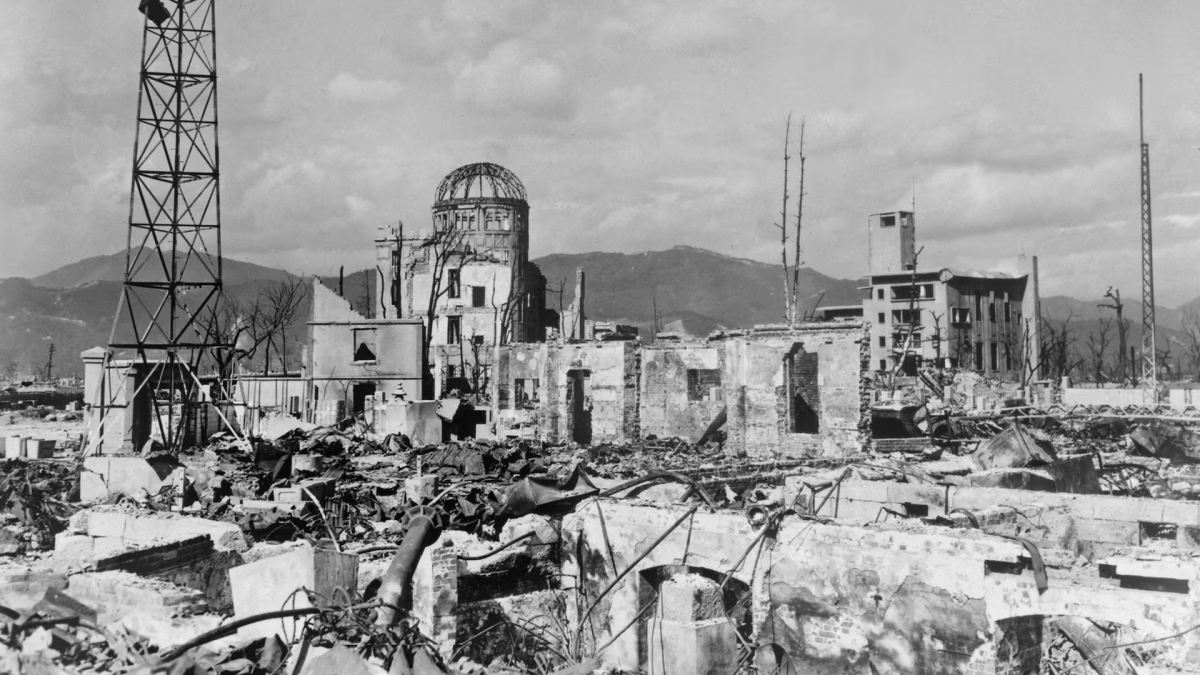- By Dr Sadhana Kala
- Wed, 06 Aug 2025 06:19 PM (IST)
- Source:JNM
On August 6, 1945, the city of Hiroshima awoke to a warm summer morning. By 8:15 AM, a single act would change the course of history forever. A US bomber, the Enola Gay, dropped an atomic bomb—nicknamed 'Little Boy'—over the city. In a blinding flash, the heart of Hiroshima was obliterated. Tens of thousands perished instantly; many more would die in the weeks, months, and years to come from burns, injuries, and radiation sickness.
Seventy-eight years later, Hiroshima Day is not merely a day of mourning—it is a solemn reminder of the unimaginable cost of nuclear warfare and a call to action for a world still shadowed by the nuclear threat.
A Morning That Shattered the World
The atomic bombing of Hiroshima was the first use of nuclear weapons in war. The explosion instantly flattened five square miles of the city. Temperatures at the hypocenter soared to several thousand degrees Celsius, igniting fires that consumed what remained of buildings and homes.
Survivors—known as hibakusha—describe scenes of unthinkable horror: people with skin peeling from their bodies, children crying for parents who would never come, and a city transformed into a wasteland. By the end of 1945, an estimated 140,000 people in Hiroshima had died as a direct result of the bombing.
Three days later, Nagasaki would suffer a similar fate. The bombings, followed by Japan’s surrender on August 15, brought World War II to a close but ushered humanity into the nuclear age.
The Human Toll Beyond the Numbers
While the statistics are staggering, the human stories carry the deepest weight. Hibakusha lived with not only the physical scars but also the psychological trauma of surviving what many could not. For decades, they faced discrimination in jobs, marriage, and social life due to fears of radiation-related illnesses.
Children of survivors—hibakusha nisei—grew up in the shadow of their parents’ suffering. Radiation-induced cancers, chronic illnesses, and post-traumatic stress became part of the long tail of the bombing’s devastation.
Even today, as the number of hibakusha dwindles, their testimonies remain a vital moral force in global disarmament efforts.
Devastation caused by an atomic bomb is seen in Nagasaki, Japan March 17, 1948. Department of Energy/Lawrence Berkeley National Laboratory/Handout via REUTERS
Hiroshima’s Message to the World
Hiroshima has become more than a city—it is a symbol. Its Peace Memorial Park, built at the epicenter of the blast, draws millions each year. The skeletal remains of the Atomic Bomb Dome stand as a stark warning against the repetition of such horror.
Every year on August 6, the Peace Bell is rung, and a minute of silence is observed at 8:15 a.m. Doves are released, and the Mayor of Hiroshima delivers the Peace Declaration, urging nations to abandon nuclear weapons.
The city’s resilience is extraordinary. From the ashes, Hiroshima rebuilt itself into a vibrant, modern city. Yet it has never lost sight of its mission: to advocate for a world without nuclear arms.
The Global Nuclear Reality
Despite decades of arms control agreements, nuclear weapons remain an existential threat. As of 2025, nine countries possess nuclear arsenals, with a combined total of roughly 12,500 warheads. While far fewer than the Cold War peak of over 70,000, these weapons are many times more potent than the bomb dropped on Hiroshima.
Geopolitical tensions—involving the US, Russia, China, India, Pakistan, and North Korea—have fueled the modernization of nuclear arsenals. The erosion of arms control treaties, such as the Intermediate-Range Nuclear Forces (INF) Treaty, has raised alarms among disarmament advocates.
For many, Hiroshima Day is a call to reinvigorate the push for complete nuclear disarmament. The Treaty on the Prohibition of Nuclear Weapons (TPNW), adopted in 2017 and entered into force in 2021, represents a landmark in international law. While nuclear-armed states have yet to join, the treaty reflects growing global consensus that nuclear weapons have no place in humanity’s future.
From Memory to Moral Imperative
The significance of Hiroshima Day extends beyond history lessons. It challenges us to confront questions about morality, security, and human survival. Is deterrence—relying on the threat of nuclear annihilation to maintain peace—truly sustainable? What happens when miscalculation, accident, or cyber interference comes into play?
Hiroshima’s story warns us that technological capability must be tempered with ethical responsibility. The bomb was the product of brilliant science—yet science unrestrained by moral consideration led to catastrophic consequences.
The survivors’ plea is simple: “No one else should ever suffer as we have.” This call resonates today, when emerging technologies—artificial intelligence, hypersonic missiles, autonomous weapons—carry new and unpredictable dangers.
Intergenerational Memory and Education
With the average age of hibakusha now over 85, there is an urgent need to pass their stories to future generations. Schools, museums, and peace organisations in Japan and abroad have embraced this mission. Digital archives, virtual reality reconstructions, and traveling exhibitions help preserve the memory for those too young to have met survivors in person.
In Hiroshima, the Peace Memorial Museum has expanded its educational outreach, offering programs in multiple languages. Student delegations from around the world participate in peace seminars, learning firsthand the consequences of nuclear war.
This intergenerational dialogue is crucial—not just for remembrance, but for inspiring active engagement in building a safer world.
The Role of Art and Culture in Remembrance
Art has played a profound role in communicating Hiroshima’s message. From the haunting black-and-white drawings of survivors to international films like Hiroshima Mon Amour and Grave of the Fireflies, creative works have helped convey the human experience beyond what photographs or statistics can express.
The annual Hiroshima Flower Festival blends cultural celebration with remembrance, demonstrating that peace is not only the absence of war but the presence of life, beauty, and community.
Hiroshima in Today’s Geopolitical Climate
The relevance of Hiroshima Day has sharpened in an era of renewed great-power competition. Tensions in Eastern Europe, the South China Sea, and the Korean Peninsula highlight how quickly disputes can escalate. The war in Ukraine has reintroduced open discussion of nuclear weapons use—a chilling reminder that the nuclear shadow has never truly lifted.
Climate change, pandemics, and economic instability are also reshaping security priorities. Yet nuclear risk persists, often sidelined in public discourse until a crisis erupts. Hiroshima Day urges leaders and citizens alike to keep the nuclear question at the forefront of global security debates.
From Commemoration to Action
Commemorating Hiroshima means more than laying wreaths—it demands concrete action. Disarmament advocates call for:
- Recommitment to Arms Control: Reviving and expanding agreements to limit nuclear weapons, prevent proliferation, and reduce the risk of accidental launches.
- Nuclear-Free Zones: Expanding regions where nuclear weapons are prohibited, as in Latin America, Africa, and Southeast Asia.
- Diplomatic Engagement: Sustained dialogue between nuclear and non-nuclear states to bridge trust deficits.
- Public Awareness Campaigns: Ensuring that younger generations understand the stakes of nuclear policy.
Grassroots activism, from the anti-nuclear movements of the 1980s to today’s climate and peace coalitions, shows that public pressure can influence policy.
Why Hiroshima Still Matters
Some may see Hiroshima as a chapter of history, closed and distant. Yet the lessons of August 6, 1945, are urgent and universal. They speak to the fragility of civilisation, the limits of human control over destructive technology, and the moral obligation to protect future generations.
Hiroshima reminds us that progress is not inevitable—that civilization’s survival depends on conscious choices. It asks each of us, in our own way, to be custodians of peace.
A Bell That Must Keep Ringing
As the Peace Bell tolls in Hiroshima this year, its sound will carry far beyond Japan. It will echo in the halls of governments, in classrooms, in the hearts of activists, and in the quiet moments of those who remember the mushroom cloud rising over a city that should never have been a battlefield.
The world today faces complex challenges, but none so final as nuclear war. On Hiroshima Day, we are called to reflect—not only on what happened, but on what could happen if we forget.
In the words of survivor Setsuko Thurlow, who accepted the Nobel Peace Prize on behalf of the International Campaign to Abolish Nuclear Weapons (ICAN) in 2017:
“Humanity and nuclear weapons cannot coexist.”
The truth of that statement is as clear now as it was in the firestorm over Hiroshima. Remembering is not enough. The promise we make on Hiroshima Day must be to act—so that future generations will never know the world’s most terrible weapon except as history’s warning.
(Note: Dr (Prof) Sadhana Kala is a USA-trained robotic & laparoscopic surgeon, Uppsala University, Sweden, trained fertility specialist, Icon Endoscopic Surgeon of North India, and National Icon Endoscopic Surgeon of India. She is rated as India's Best Gynecologist by Google.)
(Air Vice Marshal (Retired) Prakash Kala, an experimental test pilot, and a highly experienced fighter pilot, is a co-writer of the blog.)
(Disclaimer: The views expressed in this article are the personal opinions of the author.)


